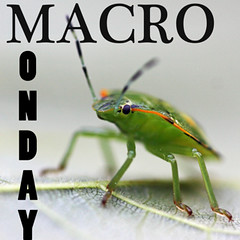Our dry season is here, our last rain was in November. , Even if rain's lacking in December to January, at least the temperatures are a bit colder courtesy of the winds from Northern China and Siberia. But coming February, our grasses, weeds and bushes are now turning to brown. Some trees are also shedding their leaves this time, most specially our national tree, a dipterocarp called narra,
Pterocarpus indicus. Only the watered plants in landscaped gardens are still green.
At home in our property, some plants are flowering, maybe to produce seeds before the searing heat arrives. We can't blame them, as very very few shallow rooted plants can flower during our dry season temperatures.
Sansevieria trifasciata or mother-in-laws tongue, or snake plant flowers. These are planted under the trees so receive only filtered light, but at least not very strong sun's rays.
I bet not many among us are familiar with croton's flowers. They are born in spikes longer than a foot. They do not flower yearly, so I am also excited seeing them bloom.
This wild Lantana camara is very invasive but favorite of butterflies, sorry for this one as it was captured by the spider web. The stems form a mat of canopy with clearings underneath that serves as covers for resting chickens that feel the searing heat too. We have free-ranged chickens so love to rest under this.
This lily flowered in May when the rainy season started, these are now the ripe berries
fruits of orange Heliconia, but Heliconia doesn't stop flowering even in the dry season
red kalanchoe, cactuses are desert plants so they are at home with our conditions
red-orange
Hippeastrum puniceum that flowered out of season
Orthosiphon cristatus, catwhiskers, still giving lovely whiskers.
Turnera subulata never fails to produce the love of bumble bees.
The remaining sepals of the 4 o'clock flowers still look very much like flowers, those seeds turn black when ready for planting,
Mirabilis jalapa
Hibiscus rosa-sinenses also continue to reach for the sky even during the hottest days. It is one of the most drought tolerant species in our part of the world. When hibiscus hybrids cannot tolerate dry season temperatures, this traditional variety can. And it is already a big bush.
The side plantings of
Ixora coccinea never fail to satisfy the butterflies. At the left is the
Euphorbia millii, not stopping to produce flowers too.






















































